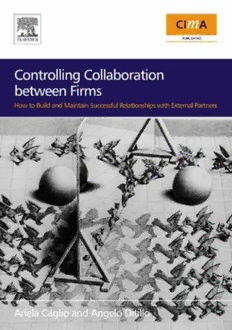
Controlling Collaboration Between Firms: How to Build and Maintain Successful Relationships with External Partners PDF
198 Pages·2008·0.903 MB·English
Most books are stored in the elastic cloud where traffic is expensive. For this reason, we have a limit on daily download.
Preview Controlling Collaboration Between Firms: How to Build and Maintain Successful Relationships with External Partners
Description:
As markets become increasingly globalised and competitive, many firms struggle to succeed across all aspects of business ventures. While some firms have the necessary resources in place, others are forced to consider collaborating with other companies.The purpose of this book is to explain the challenges that these new, collaborative forms of organisation generate with reference to how management control systems and accounting information exchanges are practised and designed at an inter-organisational level.Control and accounting information sharing practices between firms are illustrated by means of a field study and four case studies on successful inter-organisational collaborative relationships, with a particular emphasis on fashion firms, which are at the forefront of experimentation with these new organisational solutions.This book will be invaluable to managers, consultants and researchers who have an interest in firms characterised by critical relationships with external partners along the value chain. . to understand the nature of collaborative partnerships and illustrate the variables that explain the choice of different control modes in the various contexts of cooperation;. to describe the characteristics of management accounting mechanisms for cross-boundary settings, such as collaborative programmes and budgets, inter-firm performance measurement systems and inter-organisational cost management techniques;. to describe empirical evidence on control choices, management accounting practices and on management accountants' roles in collaborative relationships;. to present a framework of control patterns and specific Accounting Information Network (AIN) configurations that provide some novel theoretical insights on inter-organisational accounting and control and some guidance to practitioners operating in inter-firm collaborative settings.
See more
The list of books you might like
Most books are stored in the elastic cloud where traffic is expensive. For this reason, we have a limit on daily download.
